
How to Use Utimel electronics Current sensor 5A ACS712: Examples, Pinouts, and Specs
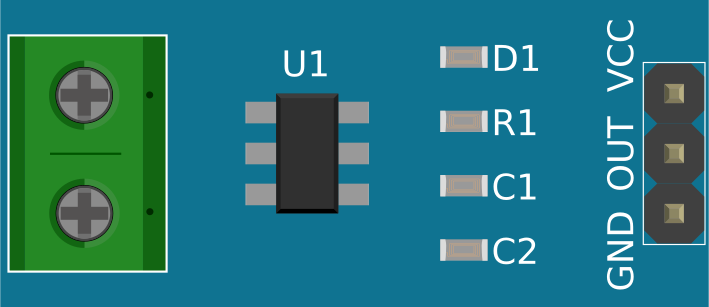
 Design with Utimel electronics Current sensor 5A ACS712 in Cirkit Designer
Design with Utimel electronics Current sensor 5A ACS712 in Cirkit DesignerIntroduction
The ACS712 is a Hall effect-based current sensor capable of measuring both AC and DC currents up to ±5A. It outputs an analog voltage proportional to the current flowing through the sensor, making it an ideal choice for applications requiring precise current measurement. The sensor is compact, easy to use, and provides electrical isolation between the measured current and the output signal.
Explore Projects Built with Utimel electronics Current sensor 5A ACS712
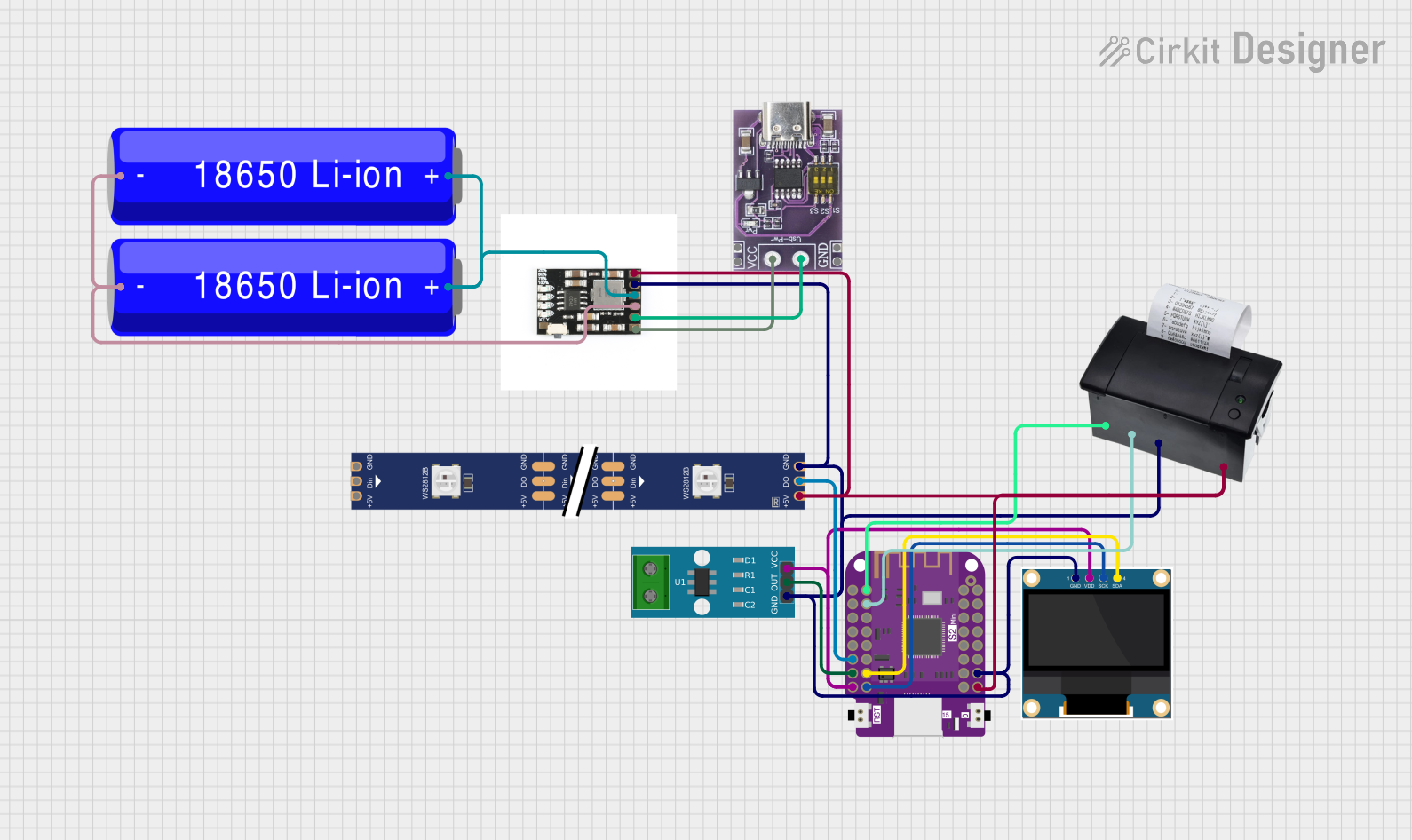
 Open Project in Cirkit Designer
Open Project in Cirkit Designer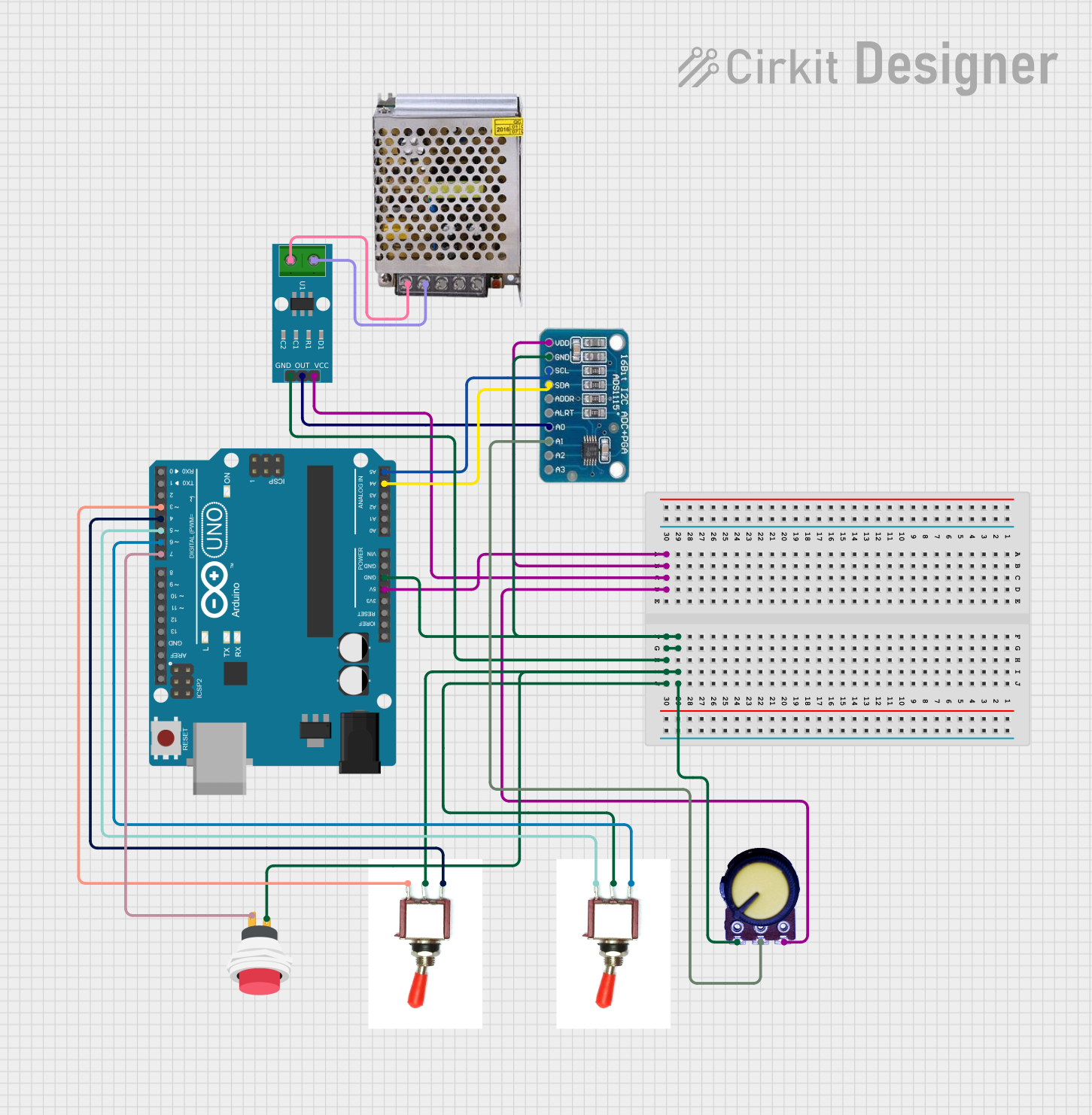
 Open Project in Cirkit Designer
Open Project in Cirkit Designer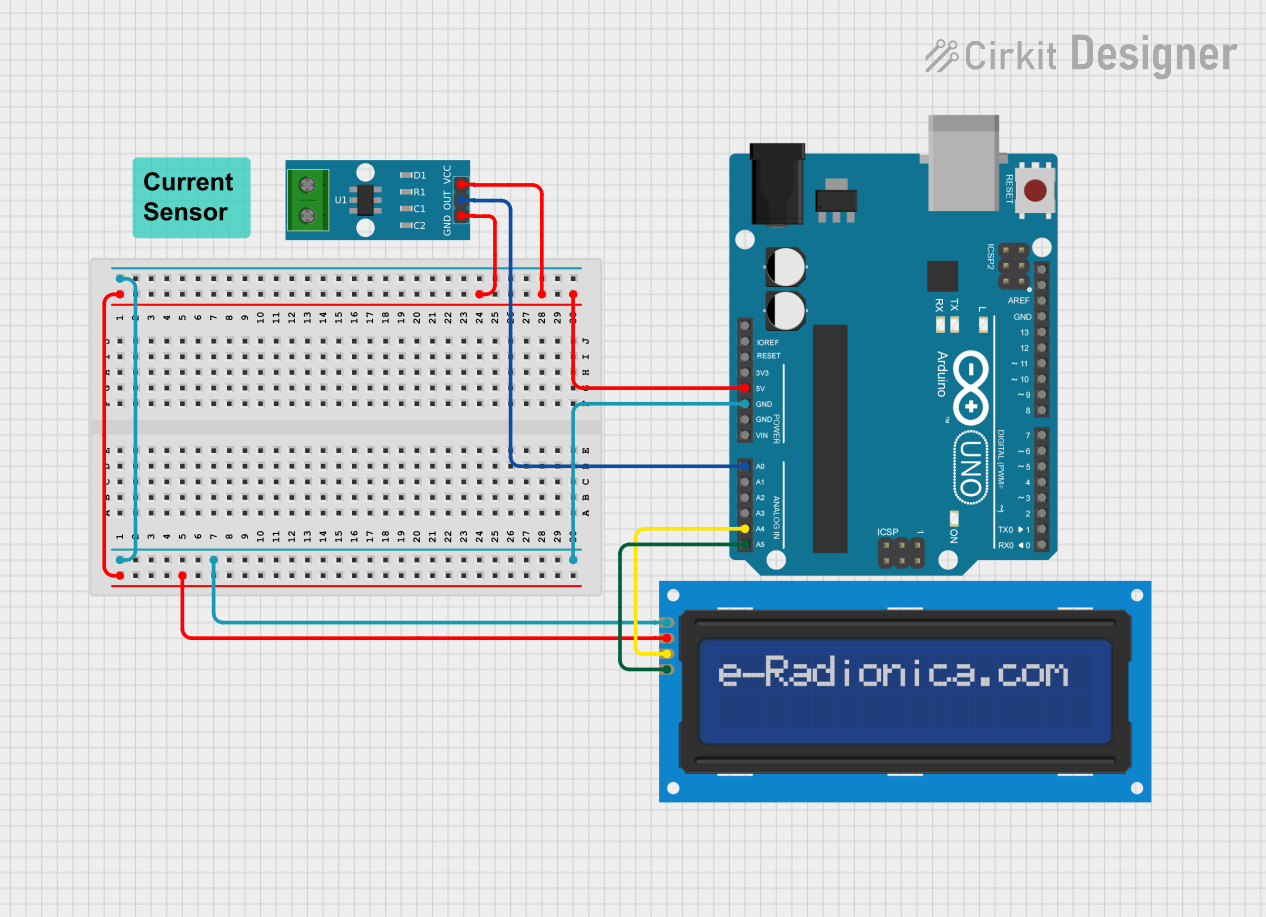
 Open Project in Cirkit Designer
Open Project in Cirkit Designer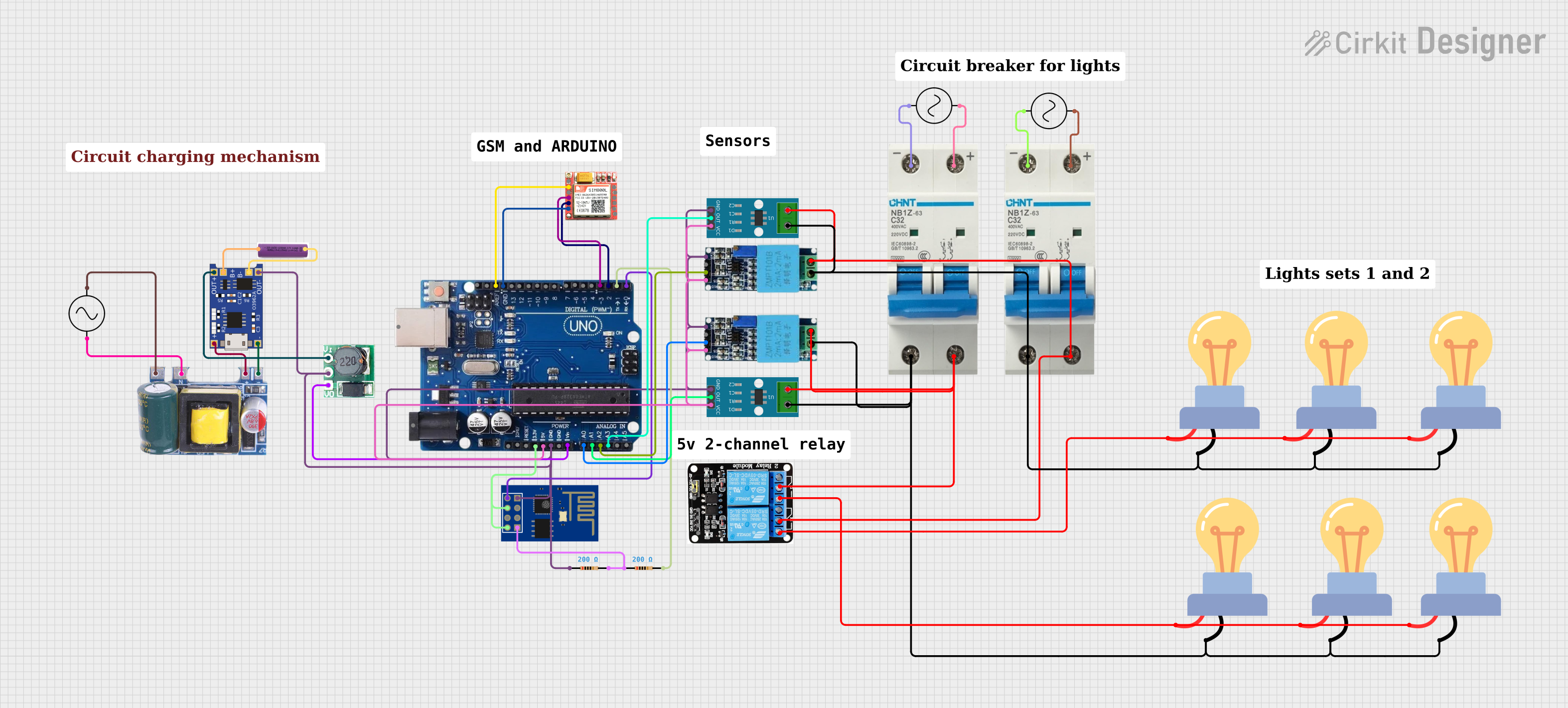
 Open Project in Cirkit Designer
Open Project in Cirkit DesignerExplore Projects Built with Utimel electronics Current sensor 5A ACS712

 Open Project in Cirkit Designer
Open Project in Cirkit Designer
 Open Project in Cirkit Designer
Open Project in Cirkit Designer
 Open Project in Cirkit Designer
Open Project in Cirkit Designer
 Open Project in Cirkit Designer
Open Project in Cirkit DesignerCommon Applications and Use Cases
- Power monitoring in household appliances
- Overcurrent protection in circuits
- Battery management systems
- Motor control and monitoring
- Renewable energy systems (e.g., solar inverters)
- Robotics and automation
Technical Specifications
Key Technical Details
- Current Measurement Range: ±5A
- Supply Voltage (Vcc): 4.5V to 5.5V
- Output Voltage Range: 0V to Vcc
- Sensitivity: 185 mV/A
- Accuracy: ±1.5%
- Bandwidth: 80 kHz
- Response Time: 5 µs
- Operating Temperature Range: -40°C to 85°C
- Isolation Voltage: 2.1 kV RMS
Pin Configuration and Descriptions
The ACS712 module typically has three pins for connection:
| Pin Name | Description |
|---|---|
| Vcc | Power supply input (4.5V to 5.5V). Connect to the 5V pin of your microcontroller. |
| Out | Analog voltage output proportional to the current being measured. |
| GND | Ground connection. Connect to the ground of your circuit. |
Usage Instructions
How to Use the Component in a Circuit
- Power the Sensor: Connect the Vcc pin to a 5V power source and the GND pin to the ground of your circuit.
- Connect the Load: Pass the current-carrying wire through the sensor's current path. Ensure the current does not exceed ±5A.
- Read the Output: Connect the Out pin to an analog input pin of a microcontroller (e.g., Arduino UNO) to read the voltage output.
- Calculate the Current: Use the sensor's sensitivity (185 mV/A) to convert the output voltage into the corresponding current value.
Important Considerations and Best Practices
- Avoid Overcurrent: Ensure the current through the sensor does not exceed ±5A to prevent damage.
- Noise Filtering: Add a capacitor (e.g., 0.1 µF) between the Out pin and GND to reduce noise in the output signal.
- Calibration: Perform a calibration to account for any offset in the output voltage when no current is flowing.
- Orientation: Ensure the current flows in the correct direction as indicated on the sensor for accurate readings.
- Isolation: The ACS712 provides electrical isolation, but ensure proper insulation for high-voltage applications.
Example Code for Arduino UNO
// Example code to read current using the ACS712 sensor with Arduino UNO
const int sensorPin = A0; // Connect the Out pin of the ACS712 to A0
const float sensitivity = 0.185; // Sensitivity of ACS712 (185 mV/A)
const float vcc = 5.0; // Supply voltage to the sensor (5V)
const float zeroCurrentVoltage = vcc / 2; // Output voltage at 0A (2.5V for 5V supply)
void setup() {
Serial.begin(9600); // Initialize serial communication
pinMode(sensorPin, INPUT); // Set the sensor pin as input
}
void loop() {
int sensorValue = analogRead(sensorPin); // Read the analog value
float voltage = (sensorValue / 1023.0) * vcc; // Convert to voltage
float current = (voltage - zeroCurrentVoltage) / sensitivity;
// Calculate current in Amperes
Serial.print("Current: ");
Serial.print(current, 3); // Print current with 3 decimal places
Serial.println(" A"); // Append unit
delay(1000); // Wait for 1 second before the next reading
}
Troubleshooting and FAQs
Common Issues and Solutions
No Output Voltage or Incorrect Readings:
- Cause: Improper wiring or loose connections.
- Solution: Double-check all connections, especially the Vcc, GND, and Out pins.
High Noise in Output Signal:
- Cause: Electrical noise or lack of filtering.
- Solution: Add a 0.1 µF capacitor between the Out pin and GND to filter noise.
Output Voltage Does Not Change with Current:
- Cause: Current is not flowing through the sensor or exceeds the range.
- Solution: Ensure the current-carrying wire passes through the sensor and stays within the ±5A range.
Offset in Zero Current Voltage:
- Cause: Manufacturing tolerances or environmental factors.
- Solution: Perform a calibration by measuring the output voltage with no current and adjusting calculations accordingly.
FAQs
Q1: Can the ACS712 measure currents higher than 5A?
A1: No, the ACS712-5A variant is designed for currents up to ±5A. For higher currents, use other ACS712 variants (e.g., 20A or 30A).
Q2: Can I use the ACS712 with a 3.3V microcontroller?
A2: Yes, but ensure the sensor is powered with 5V and the output voltage does not exceed the microcontroller's ADC input range.
Q3: How do I improve the accuracy of the sensor?
A3: Perform a calibration, use a stable power supply, and add noise filtering capacitors.
Q4: Is the ACS712 suitable for high-frequency current measurement?
A4: The ACS712 has a bandwidth of 80 kHz, making it suitable for most applications, but not for very high-frequency signals.